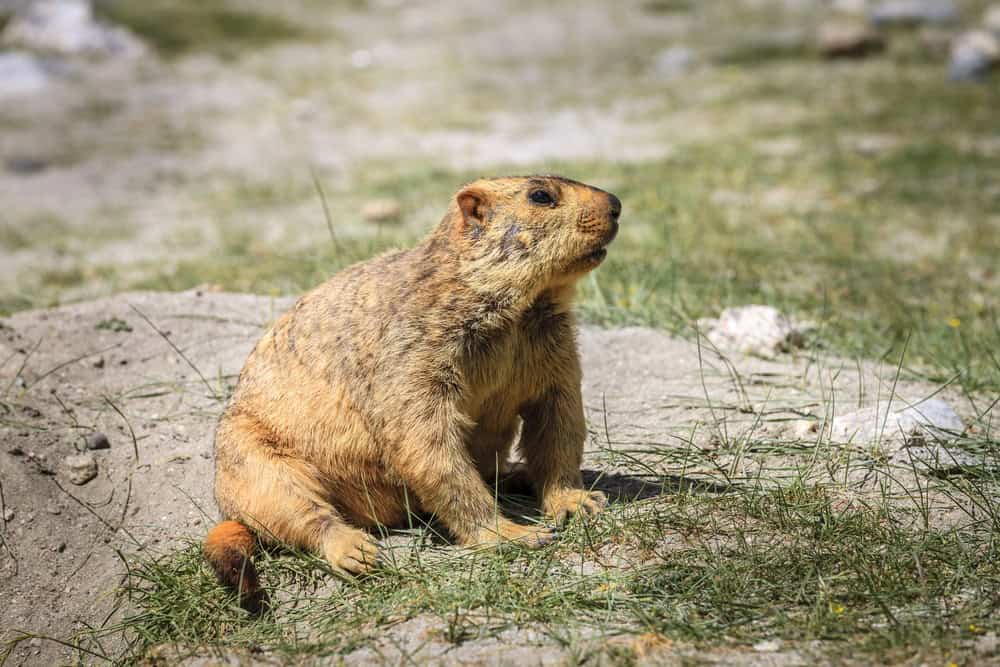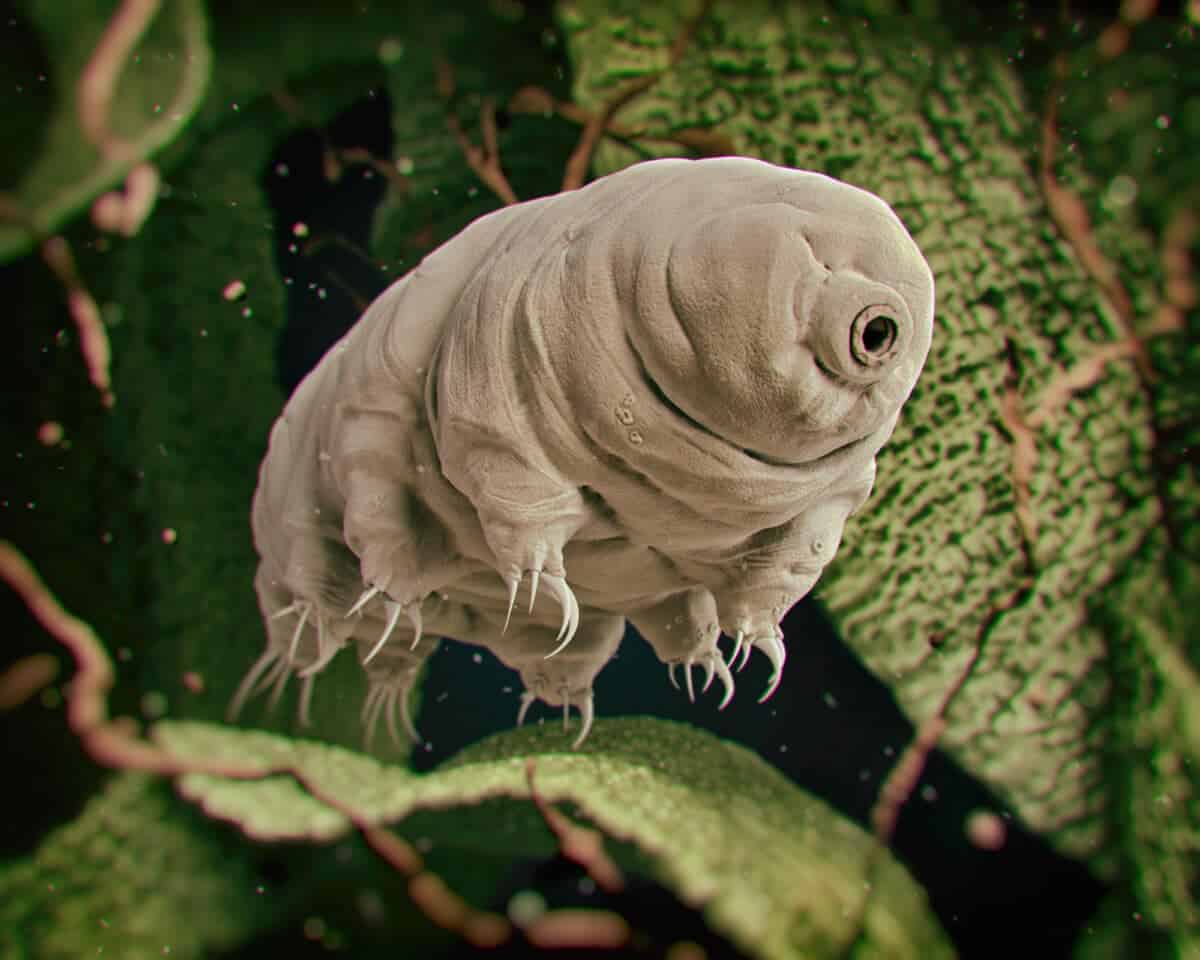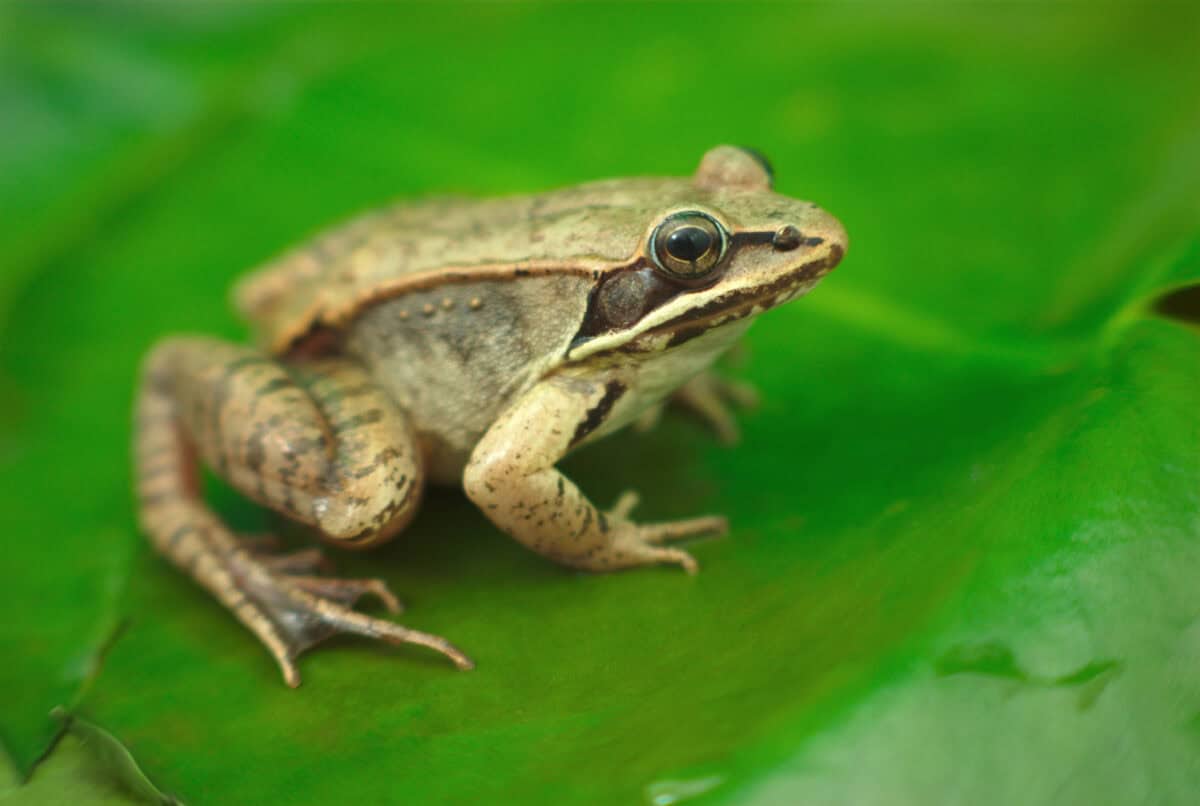The natural world is filled with extraordinary examples of adaptation and survival, but perhaps none are more impressive than cold-blooded creatures that thrive in extreme environments. Unlike warm-blooded animals that maintain constant internal temperatures, cold-blooded (or ectothermic) animals rely on external heat sources and remarkable adaptations to survive. From scorching deserts to freezing polar regions, these remarkable beings have evolved specialized mechanisms that allow them to endure conditions that would be lethal to most other organisms. This article explores twelve of the most fascinating cold-blooded creatures that have mastered the art of survival in Earth’s most challenging habitats, demonstrating nature’s incredible resilience and ingenuity.
11. Wood Frogs Nature’s Freeze-Tolerant Marvels

Wood frogs (Lithobates sylvaticus) have developed one of the most extraordinary survival mechanisms in the animal kingdom. Found throughout North America, including parts of Alaska and Canada, these amphibians can survive being completely frozen for weeks during winter. When temperatures drop, the wood frog’s body begins producing large amounts of glucose and urea, which act as natural antifreeze compounds. Up to 65% of the water in their body freezes solid, their heart stops beating, and they cease breathing entirely. Their cells are protected from ice damage by these cryoprotectants, allowing them to remain in suspended animation until spring arrives. When temperatures rise, they simply thaw out and resume normal activities, with no apparent harm from their frozen state. This remarkable adaptation allows wood frogs to survive in regions where winter temperatures regularly plunge well below freezing, making them the most cold-tolerant amphibians in North America.
10. Australian Water-Holding Frog Desert Water Reservoirs

The Australian water-holding frog (Cyclorana platycephala), also known as the desert spadefoot toad, has evolved remarkable adaptations to survive in one of the harshest environments on Earth—the arid Australian outback. When drought conditions prevail, these resourceful amphibians burrow deep into the sand and secrete a water-impermeable cocoon made of shed skin and mucus, leaving only their nostrils exposed. Inside this protective chamber, they can remain dormant for years, waiting for rain. During this estivation period, they store water in their bladders and specialized compartments under their skin, which can expand to hold water equal to about 30% of their body weight. Their metabolic rate drops dramatically, and they survive on fat reserves stored in their bodies. When heavy rains finally arrive, these frogs emerge from their subterranean chambers within hours, quickly mate, and complete their life cycle before the desert dries out again. Some specimens have reportedly survived in this state for up to seven years without access to external water—a true testament to their extraordinary ability to endure extreme drought conditions.
9. Thorny Devil Master of Desert Water Collection

The thorny devil (Moloch horridus) is a small lizard that has perfected the art of water harvesting in Australia’s harshest deserts. This remarkable reptile is covered in conical spines that serve multiple purposes, including defense against predators and an ingenious water collection system. Between these thorns lies a network of microscopic channels that form a capillary system across the lizard’s entire body. When morning dew forms or during rare desert rainfall, water is drawn through these channels toward the thorny devil’s mouth through capillary action, essentially allowing the lizard to drink through its skin. This remarkable adaptation enables the thorny devil to collect moisture from any part of its body that comes into contact with water, even from damp sand. They can also collect moisture from the air when humidity is high. The lizard’s skin color changes depending on temperature and emotional state, providing camouflage against the desert backdrop. With a diet consisting almost exclusively of ants (consuming up to 3,000 per day), the thorny devil has found a reliable food source in an environment where resources are scarce, demonstrating how specialized adaptations can allow cold-blooded creatures to thrive in seemingly uninhabitable places.
8. Saharan Silver Ant The Desert’s Speed Demon

The Saharan silver ant (Cataglyphis bombycina) has evolved to venture where few other creatures dare—onto the scorching sands of the Sahara Desert during the hottest part of the day. These remarkable insects emerge from their underground nests when surface temperatures can exceed 150°F (65°C), conditions that would kill most other insects within minutes. Their bodies are covered with uniquely shaped silver hairs that reflect up to 95% of solar radiation and help dissipate heat, acting as a biological heat shield. These specialized hairs give the ants their distinctive silvery appearance and can lower their body temperature by up to 10°C compared to ants without this adaptation. Saharan silver ants have also evolved incredibly long legs that keep their bodies farther from the hot sand and allow them to move at astonishing speeds—up to 108 body lengths per second, making them among the fastest creatures on Earth relative to their size. This phenomenal speed enables them to minimize exposure time while foraging for food, typically dead insects that have succumbed to the extreme heat. Their daily foraging window is extremely narrow—often just 10-20 minutes—during which they must navigate precisely using polarized light patterns and memory of landmarks. This remarkable suite of adaptations allows these cold-blooded creatures to carve out a niche in an environment so hostile that it eliminates competition and predators alike.
7. Antarctic Icefish Living Without Hemoglobin

In the frigid waters surrounding Antarctica, the Antarctic icefish (family Channichthyidae) has evolved perhaps one of the most counterintuitive adaptations in the animal kingdom. These remarkable fish are the only known vertebrates that completely lack hemoglobin, the oxygen-carrying protein in red blood cells that gives blood its red color. As a result, their blood is colorless and transparent, earning them the nickname “white-blooded fish.” This seemingly disadvantageous mutation actually works in their favor in the oxygen-rich, near-freezing Antarctic waters. The absence of hemoglobin reduces blood viscosity, allowing it to flow more easily at temperatures that would normally cause blood to thicken. Icefish also possess enlarged hearts and blood vessels to pump larger volumes of blood through their bodies, compensating for the reduced oxygen-carrying capacity. Additionally, they produce antifreeze glycoproteins that prevent ice crystals from forming in their bloodstream, allowing them to survive in waters as cold as 28.8°F (-1.8°C), below the freezing point of normal seawater. Their large gills extract oxygen directly from the water, and their bodies have reduced bone density to increase buoyancy in the cold, dense Antarctic waters. These extraordinary adaptations demonstrate how evolution can sometimes solve environmental challenges by completely reworking fundamental biological systems.
6. Namib Desert Beetle Fog Harvester

The Namib Desert beetle (Stenocara gracilipes) has evolved an ingenious mechanism to survive in one of the driest places on Earth, where annual rainfall averages less than half an inch. This resourceful insect has specialized bumps on its back that create a pattern of hydrophilic (water-attracting) and hydrophobic (water-repelling) areas. During the early morning hours, when fog rolls in from the Atlantic Ocean, the beetle positions itself on sand dunes with its back angled into the wind. The hydrophilic areas on its bumpy back attract water droplets from the fog, which gradually accumulate until they reach a critical size. Once heavy enough, these droplets roll down the hydrophobic channels directly into the beetle’s mouth, providing a vital source of hydration. This remarkable fog-harvesting ability allows the beetle to survive in an environment where conventional water sources are virtually non-existent. Scientists have been so impressed by this efficient water collection system that they’ve developed biomimetic materials inspired by the beetle’s back for potential use in water collection technologies in arid regions. The Namib Desert beetle’s adaptation exemplifies how cold-blooded creatures can evolve highly specialized mechanisms to exploit even the most minimal resources in harsh environments, turning what seems like an uninhabitable wasteland into a sustainable habitat.
5. Crucian Carp The Vertebrate That Survives Without Oxygen

The crucian carp (Carassius carassius) has mastered an extraordinary adaptation that allows it to survive in frozen lakes and ponds throughout Northern Europe and Asia. When winter ice seals off the water from atmospheric oxygen and decomposition processes deplete remaining dissolved oxygen, these remarkable fish employ a survival strategy unlike any other vertebrate. They can survive for months in completely oxygen-free (anoxic) conditions—a feat that would kill most vertebrates within minutes. The crucian carp switches from aerobic to anaerobic metabolism, converting glycogen to ethanol (alcohol) rather than lactic acid as most animals do during oxygen deprivation. This prevents acidosis, which would otherwise be fatal during prolonged oxygen shortage. The alcohol is then diffused through the gills into the surrounding water, essentially allowing the fish to remain in a state of suspended animation while slightly intoxicated. They drastically reduce their energy needs during this period by lowering their body temperature and activity level. When spring arrives and oxygen returns to the water, they resume normal metabolic functions with no apparent harm. This remarkable adaptation allows crucian carp to inhabit waters that experience complete winter freezing, giving them exclusive access to these habitats and freedom from most predators during these harsh periods. Their anoxia tolerance remains one of the most impressive survival mechanisms in the vertebrate world.
4. Himalayan Marmot High-Altitude Hibernator

The Himalayan marmot (Marmota himalayana) has adapted to survive in one of the world’s most extreme environments—the high-altitude regions of the Himalayan plateau, where oxygen is scarce and temperatures fluctuate dramatically. These cold-blooded rodents can be found at elevations up to 18,000 feet (5,500 meters), making them among the highest-dwelling mammals on Earth. To survive the harsh Himalayan winters, these marmots have evolved extraordinary hibernation capabilities. They spend over eight months of the year in hibernation, during which their body temperature drops to just above freezing, their heart rate slows from 120 to just 3-4 beats per minute, and their breathing becomes barely detectable, taking just one breath every five minutes. This extreme metabolic suppression allows them to conserve energy during the long winter months when food is unavailable. Before entering hibernation, Himalayan marmots double their body weight by accumulating fat reserves during the brief summer months. They also line their burrows with hay for insulation and plug the entrances to maintain stable temperatures. Their blood has evolved specialized hemoglobin that binds oxygen more efficiently in the thin mountain air. These remarkable adaptations enable the Himalayan marmot to thrive in an environment characterized by extreme cold, hypoxia, and scarce resources—conditions that would be lethal to most other mammals.
3. Tardigrades The Ultimate Extremophiles

Tardigrades, colloquially known as “water bears” or “moss piglets,” are microscopic eight-legged animals that stand as perhaps the most resilient creatures on Earth. Found everywhere from the deepest ocean trenches to the highest mountains, these tiny invertebrates (typically 0.1-1.5 mm in length) have perfected survival in virtually any extreme environment. Their most remarkable ability is entering a state called cryptobiosis, where they expel almost all water from their bodies, retract their heads and limbs, and form a barrel-shaped structure called a “tun.” In this dehydrated state, their metabolism slows to near-zero, allowing them to survive conditions that would instantly kill most other organisms. Tardigrades can withstand temperatures from near absolute zero (-458°F/-272°C) to well above boiling (300°F/149°C), pressure six times greater than found in the deepest ocean trenches, radiation levels thousands of times higher than lethal to humans, and the vacuum of outer space. Perhaps most impressively, they can survive complete dehydration for up to 30 years, simply rehydrating and resuming normal activity when water becomes available again. These capabilities are made possible by unique proteins that protect their cells from damage during extreme conditions. While technically not reptiles or amphibians, these cold-blooded invertebrates represent the pinnacle of evolutionary adaptation to harsh environments, demonstrating survival mechanisms that continue to astonish scientists and inspire biomimetic technologies.
2. African Lungfish Masters of Estivation

The African lungfish (Protopterus species) has evolved a remarkable survival strategy for life in seasonal waters that completely disappear during dry periods. Native to freshwater swamps and rivers in East Africa that routinely dry up for months or even years, these ancient fish can survive where no other fish can. As their aquatic habitat evaporates, African lungfish burrow into the mud and create a protective cocoon from mucus secreted from their skin. This cocoon hardens into a parchment-like case that seals in moisture while allowing limited air exchange through a small opening near the fish’s mouth. Inside this protective chamber, the lungfish enters a state of estivation—a form of dormancy similar to hibernation. Their metabolic rate plummets to just 1/60th of normal levels, and they survive by slowly breaking down muscle tissue for energy. Unlike most fish, lungfish possess primitive lungs in addition to gills, allowing them to breathe air directly during this dormant period. They can remain in this suspended animation state for up to four years, completely out of water, waiting for the rains to return. When their habitat floods again, they emerge from their cocoons and resume normal activity with no apparent harm. This extraordinary adaptation has allowed lungfish to survive for over 400 million years through countless climate shifts, making them living fossils that bridge the evolutionary gap between aquatic and terrestrial vertebrates.
1. Red Flat Bark Beetle Freeze-Resistant Wonders

The red flat bark beetle (Cucujus clavipes) has developed perhaps the most extreme cold tolerance of any insect on Earth, allowing it to thrive in the harsh boreal forests of Alaska and northern Canada. These remarkable beetles can survive temperatures as low as -238°F (-150°C), far below the lowest natural temperature ever recorded on Earth’s surface. Their extraordinary cold resistance comes from multiple specialized adaptations. As winter approaches, red flat bark beetles produce large quantities of glycerol and antifreeze proteins that prevent ice crystal formation within their cells. They also undergo a process called vitrification, where their cellular fluids transform into a glass-like state rather than freezing into ice crystals that would puncture cell membranes. Additionally, these beetles can remove nearly all water from their cells before winter, reducing their body water content from 70% to less than 30%. This combination of dehydration and cryoprotectants prevents fatal ice formation. Most remarkably, they can survive in a supercooled state well below their freezing point without actually freezing. The red flat bark beetle’s cold tolerance far exceeds what’s necessary for survival in its natural habitat, where temperatures rarely drop below -76°F (-60°C), suggesting these mechanisms evolved during past ice ages when conditions were even more extreme. Their unprecedented freeze resistance continues to fascinate cryobiologists seeking applications for organ preservation and cold-storage technologies.
Conclusion: Atacama Desert Microbial Communities Life in Earth’s Driest Place
The Atacama Desert in Chile is often described as the driest non-polar desert on Earth, with some regions receiving less than 1 mm of precipitation annually and going decades without measurable rainfall. Yet even in this seemingly lifeless environment, cold-blooded microbial organisms have found ways to survive. Specialized cyanobacteria, lichens, and other microorganisms have adapted to live inside salt rocks and in the thin layer just beneath the desert surface. These remarkable life forms draw moisture from the occasional fog that rolls in from the Pacific Ocean or extract it directly from the air during rare periods of high humidity. Some have evolved to enter dormant states that can last for decades, reactivating within hours when water becomes available. Others produce hygroscopic compounds that absorb moisture directly from the atmosphere. Some microorganisms have adapted to tolerate extremely high levels of solar radiation, which is particularly intense in the high-altitude regions of the Atacama. These adaptations include DNA repair mechanisms and pigments that protect against UV damage. The most extreme Atacama microbes can survive on minimal carbon inputs and have shifted their metabolism to utilize atmospheric gases and minerals from the rocks they inhabit. While not typically considered alongside macroscopic cold-blooded animals, these mic
- 10 Common Chicken Behaviors and What They Mean - August 9, 2025
- 14 Creatures That Can Freeze and Thaw Back to Life - August 9, 2025
- 10 Animals That Risked Their Lives to Save Humans - August 9, 2025

